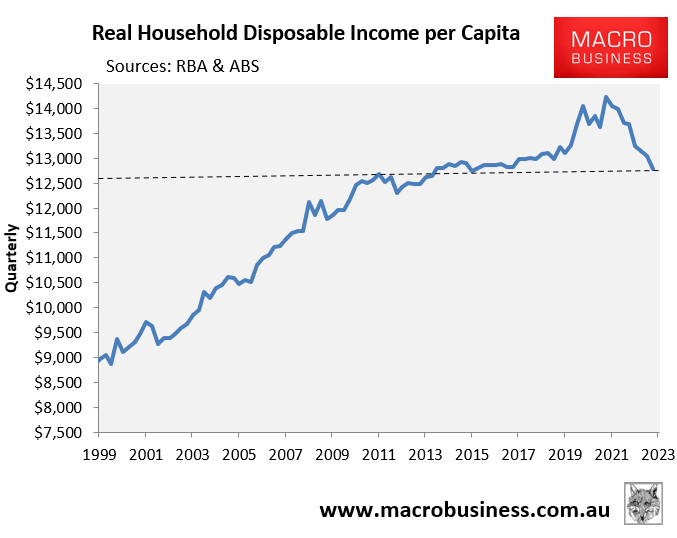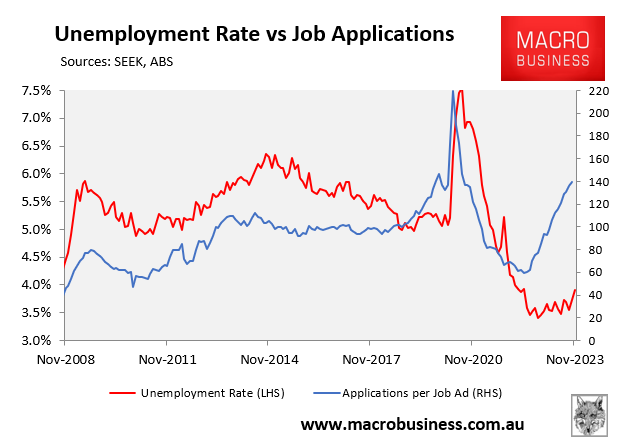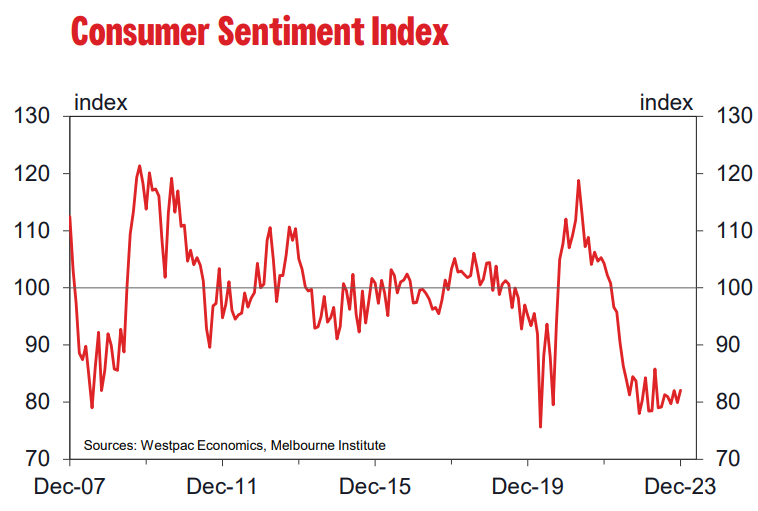The September quarter national accounts from the Australian Bureau of Statistics (ABS) reported that Australia’s GDP fell for three consecutive quarters in per capita terms to be down 0.3% year-on-year:

The general consensus of economists polled by the Australian Financial Review is that the domestic economy’s growth will slow to just 1% by mid-2024, before rising to 2.1% in 2025.
This would mean that Australia’s per capita recession would drag on all the way to mid-2024.
A sharp rise in net overseas migration was the only thing that kept the economy from experiencing a ‘technical recession’ of two consecutive quarters of negative aggregate GDP growth.

Barrenjoey’s chief economist, Jo Masters, believes that strong population growth should again ensure that Australia avoids a recession in 2024.
“We do not expect a recession in Australia, largely reflecting strong population growth”, Masters said.
Even so, Masters expects the economy to remain “very weak” in the current and next quarters and “within the margin of error for a recession”.
Marcel Thieliant, head of Asia Pacific at Capital Economics, likewise said that “record-high net migration in Australia means that there would have to be a steep fall in output per capita for a recession to occur, and we doubt the economy is this weak”.
Irrespective, it will feel like a recession for Australian households who already endured the sharpest fall in their living standards on record last year.
Real per capita household disposable income collapsed by 6% in the year to September to around 2011 levels, thus effectively wiping out 12 years of gains:

Australia’s unemployment rate is also likely to climb over 2024 to near 5%, which will also add to the pain:

Consumer sentiment ended 2023 at recessionary levels, and I don’t expect much improvement until the RBA commences an easing cycle late in the year.

The 2020s is shaping up as an even worse decade for Australians than the 2010s “lost decade”, which is exactly what MB predicted three years ago.

